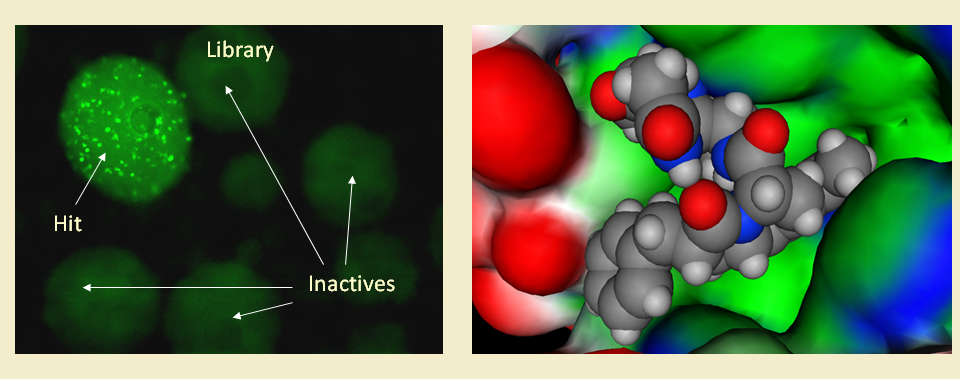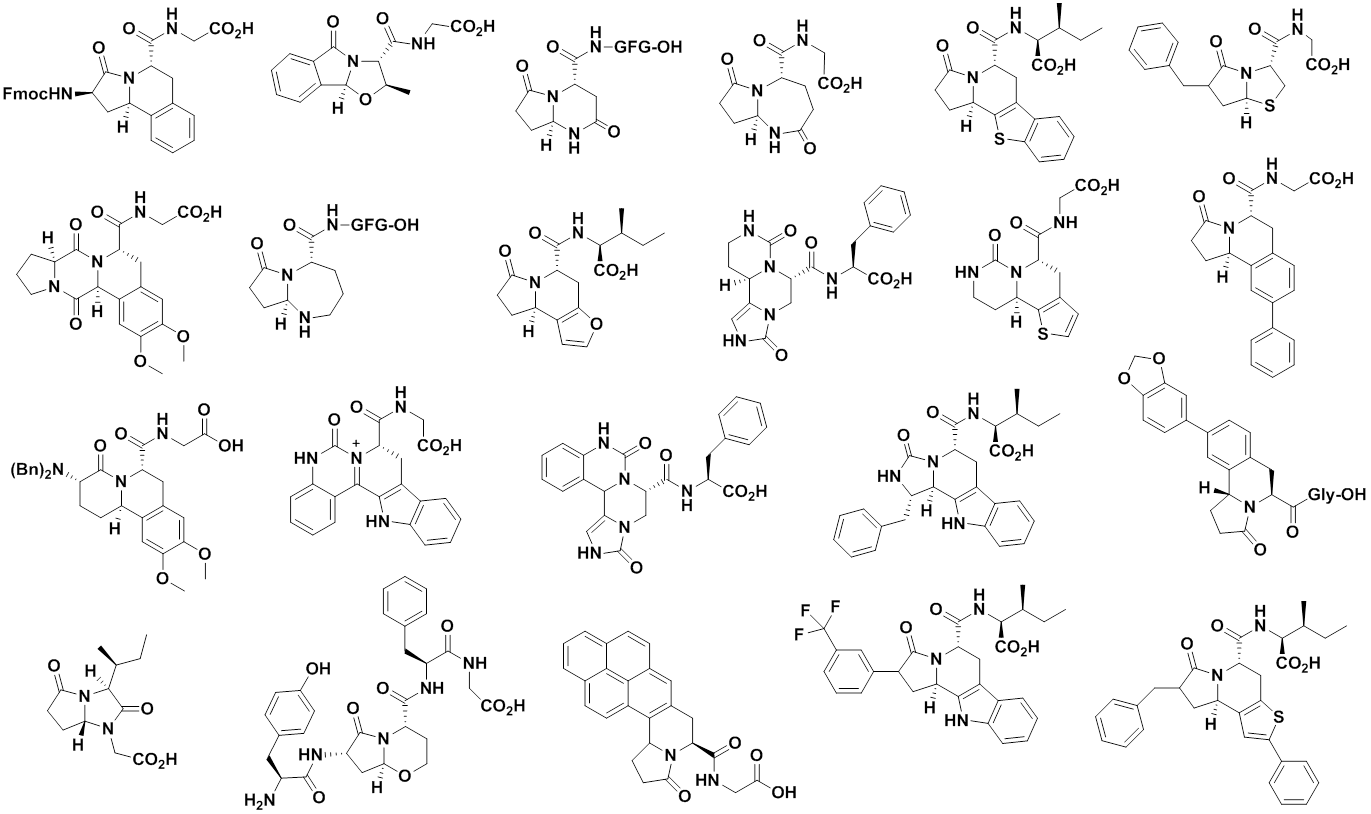G-Protein Coupled Receptors
Stable cell lines for combinatorial solid phase assays
G-protein coupled receptors, GPCRs, constitute the single most important class of targets for drug development. GPCRs are involved in all communication between the cell and its environment and therefore constitute the gateway through which information crucial to the survival of the cell has to pass. This is achieved through highly specific binding of ligands in the transmembrane domain of the receptor, resulting in a conformational shift of transmembrane helix 6, which in turn leads to phosphorylation and release of the bound G-protein, which relays the signal through adenylate cyclase and cAMP. We have developed a single expression vector containing the genes of both the GPCR of interest and the reporter YFP/DSRed. This enabled stable transfection of HEK293 cells. The cells show improved selectivity towards receptor agonists and antagonists compared to conventional assays based on cAMP determination

The stable cells can be grown on the surface of beads, and when triggered by resin bound ligands, cells attached to that bead will fluoresce while cells on other beads will remain dark.
The INAIC click chemistry allows for a large array of molecular scaffolds to be prepared by relatively simple chemical transformations. The reaction is quantitative and allows the solid-phase compounds to be prepared in split-mix format and assayed directly on the solid support for GPCR activation.

